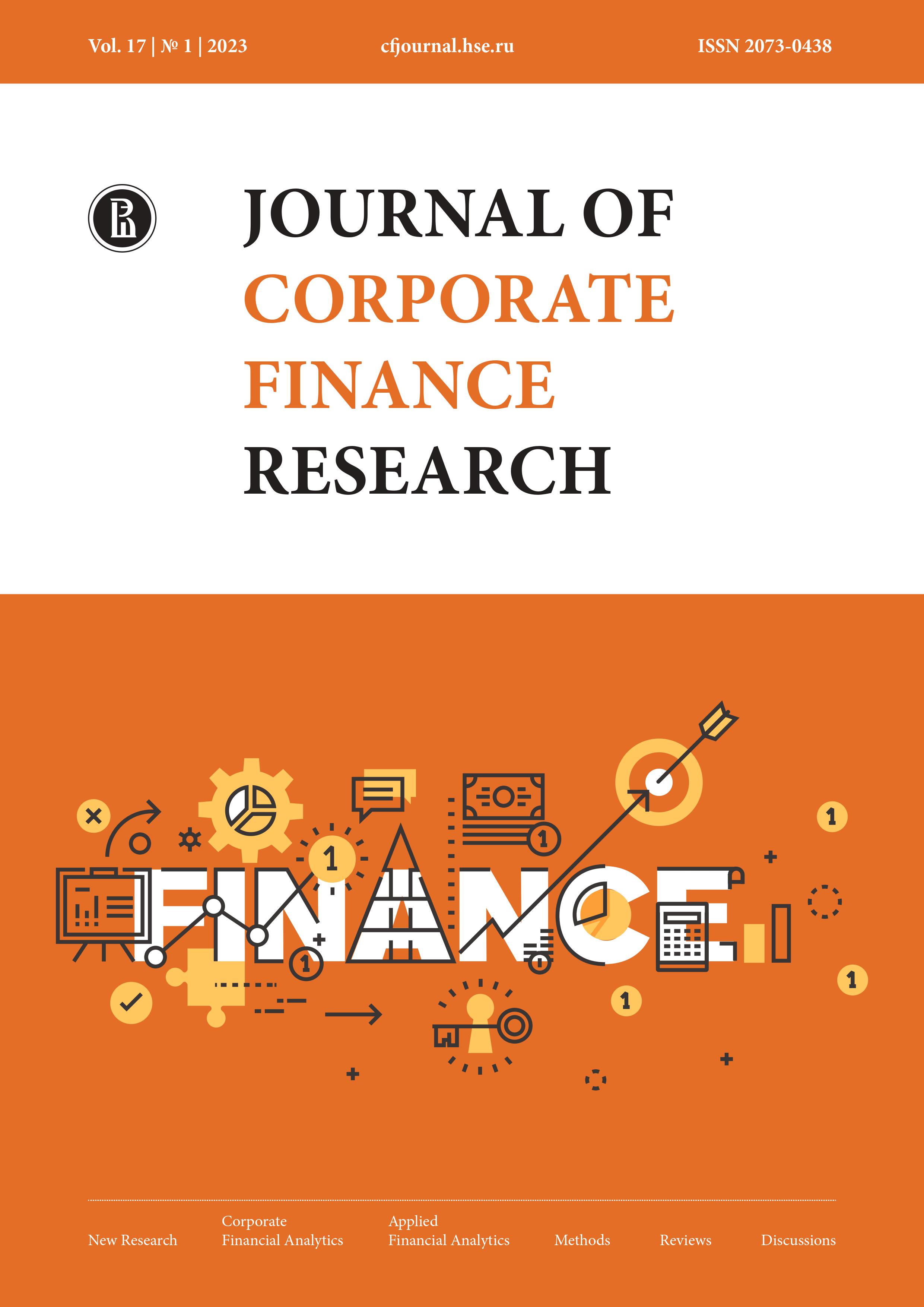Как инновационные активы влияют на финансовые показатели банков? Свидетельства из России
Аннотация
В статье рассматривается влияние инноваций на показатели деятельности коммерческих банков. В качестве прокси переменной инноваций используется размер нематериальных активов, так как большинство инноваций в банковском секторе в отличие от промышленности нематериальны и выражены в лицензиях, программном обеспечении, знаниях и опыте сотрудников, корпоративной культуре и др. Большинство исследователей сходятся на том, что рост эффективности и результативности финансовых компаний происходит преимущественно благодаря нематериальным активам, особенно их ненаблюдаемой части. Цель исследования – выявить взаимосвязь между инновациями и финансовыми показателями банков. Были рассмотрены 13 крупнейших системно значимых российских банков разной формы собственности за период с 2011 по 2020 г.
Эти банки были выбраны, так как на них приходится более 2/3 активов всей банковской системы, и они имеют свою специфику по сравнению с остальными банками как внутри страны, так и в мире. Рассматривались только крупные российские банки, без учета специфики средних и малых банков, которые имеют значительно меньшие возможности и готовы брать более высокие риски. Научная новизна заключается в том, что в статье нематериальные активы отражены количественной переменой для оценки инновационной активности банков, для чего предложен соответствующий подход. Результаты эмпирического анализа показывают, что рост нематериальных активов позволяет банкам нарастить объем как процентных, так и комиссионных доходов и замедлить рост расходов, за счет чего обеспечивается рост прибыли. В свою очередь это стимулирует рост обязательств, однако ввиду регуляторных требований доля собственного капитала остается почти неизменной на уровне около 10% от стоимости активов. Эта тенденция указывает на то, что даже небольшие банки могут конкурировать с более крупными банками благодаря внедрению инноваций и наращиванию нематериальных активов.
Скачивания
Литература
Marrano, M. G., J. Haskel, & G. Wallis. (2009). “What Happened to the Knowledge Economy? ICT, Intangible Investment, & Britain’s Productivity Record Revisited.” Review of Income & Wealth 55 (3): 686–716.10.1111/roiw.2009.55.issue-3 DOI: https://doi.org/10.1111/j.1475-4991.2009.00344.x
Koivisto M. (2018). As the innovation race hots up, how can we value intangible assets? Programme Lead, Economics & Finance, World Economic Forumю URL: https://www.weforum.org/agenda/2018/09/when-we-can-t-quite-put-our-finger-on-it-intangibles-&-finding-better-metrics-for-financing-technological-disruption/
Montresor S. & Vezzani A. (2016). Intangible investments & innovation propensity: Evidence from the Innobarometer 2013. Industry & Innovation. Volume 23, 2016 - Issue 4. p.331-352 DOI: https://doi.org/10.1080/13662716.2016.1151770
Lööf, H., & A. Heshmati. (2002). “Knowledge Capital & Performance Heterogeneity.” International Journal of Production Economics 76 (1): 61–85.10.1016/S0925-5273(01)00147-5 DOI: https://doi.org/10.1016/S0925-5273(01)00147-5
Wong, H. Y., & B. Merrilees. 2008. “The Performance Benefits of Being Br&-orientated.” Journal of Product & Br& Management 17 (6): 372–383. DOI: https://doi.org/10.1108/10610420810904112
Hamel G., Prahalad C. K. (1996). Competing in the New Economy: Managing out of Bounds // Strategic Management Journal. Vol. 17. N 3. P. 237-242. DOI: https://doi.org/10.1002/(SICI)1097-0266(199603)17:3<237::AID-SMJ829>3.0.CO;2-G
Stewart, T.A. (1997). Intellectual Capital: The New Wealth of Organizations. Doubleday/Currency, New York.
Brooking A. (1996). Intellectual Capital. London: International Thomson Business Press
Petty R., Guthrie J. (2000). Intellectual Capital Literature Overview: Measurement, Reporting and Management // Journal of Intellectual Capital. Vol. 1. N 2. P. 155-176. DOI: https://doi.org/10.1108/14691930010348731
Khan, A. M. (2018) «An Empirical Study of the Impact of Intellectual Capital on the Financial Performance of Indian IT Sector», Journal of Corporate Finance Research, 12(1), сс. 7-19. doi: 10.17323/j.jcfr.2073-0438.12.1.2018.7-19. DOI: https://doi.org/10.17323/j.jcfr.2073-0438.12.1.2018.7-19
Garanina Tatiana A. Intangible Assets and Intellectual Capital: Role in Creation of the Company Value // Vestnik of Saint-Petersburg University. Management. 2010. №2. URL: https://cyberleninka.ru/article/n/nematerialnye-aktivy-i-intellektualnyy-kapital-rol-v-sozdanii-tsennosti-kompanii-1 (reference date: 01.02.2022).
Caddy I. (2000). Intellectual Capital: Recognizing Both Assets and Liabilities // Journal of Intellectual Capital. Vol. 1. N 2. P. 129-146. DOI: https://doi.org/10.1108/14691930010377469
Harvey M. G., Lusch R. F. (1999). Balancing the Intellectual Capital Books: Intangible Liabilities // European Management Journal. Vol. 17. N 1. P. 85-92. DOI: https://doi.org/10.1016/S0263-2373(98)00065-6
Edvinsson L., Malone M. S. (1997). Intellectual Capital: Realizing Your Company's True Value by Finding Its Hidden Brainpower. N. Y.: Harper Business,
Roos J., Roos G., Dragonetti N., Edvinsson L. (1997). Intellectual Capital: Navigating the New Business Landscape. London: Macmillan Press Ltd., Stewart T. DOI: https://doi.org/10.1007/978-1-349-14494-5
Baiburina E.R., Ivashkovskaya I.V. Role of Intellectual Capital in Generation of Russian Companies’ Value // Vestnik of Financial Academy. 2007. Issue 4. No. 44. P. 53-63.
Feruleva N., Ivashkovskaya I. Assessment of intellectual capital influence on corporate value as a field for further investigations in corporate finance //
Günther T. (2001). Controlling Intangible Assets under the Framework of Value-Based Management // Kostenrechnungspraxis. Vol. 1. P. 53-62.
Kozyrev A.N. Economy of Intellectual Capital: Scholarly Papers. No. 7(R)-2006. SPb: Research and Development Institute of Management of the St. Petersburg State University, 2006.
Volkov D.L., Garanina T.A. Intangible Assets: Problems of Composition and Evaluation // Vestnik of Saint-Petersburg University 2007. Series 8. Issue 1. P. 82-105.
Lu, Jack (2010). Intangible Assets Valuation by License Market and Stock Market: Cross-Industry Analysis Based on Royalty Rate and Tobin’s Q (July 5, 2010). les Nouvelles, June 2011, Available at SSRN: https://ssrn.com/abstract=1646641
Dupernex S., (2007). Why might share prices follow a random walk? Student Economic Review, Vol. 21, 2007
Durusu-Ciftci D., Serdar Ispir M., Kok D. (2019). Do stock markets follow a random walk? New evidence for an old question. International Review of Economics & Finance. Volume 64, November 2019, Pages 165-175 DOI: https://doi.org/10.1016/j.iref.2019.06.002
Copyright (c) 2023 Национальный исследовательский университет «Высшая школа экономики»

Это произведение доступно по лицензии Creative Commons «Attribution-NonCommercial-NoDerivatives» («Атрибуция — Некоммерческое использование — Без производных произведений») 4.0 Всемирная.

